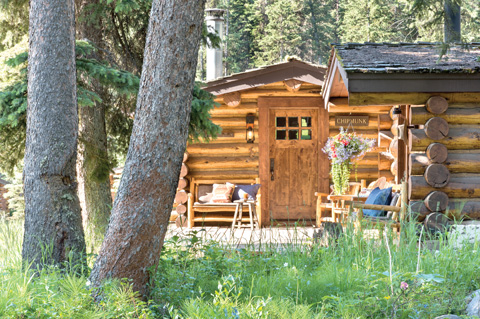Lone Mountain Ranch in Big Sky, Montana, offers a smorgasbord of log home living, a bucket list of adventures, and cuisine to live for. At less than an hour from the Bozeman airport, 18 miles from the border of Yellowstone National Park (45 to its entrance), and 7 miles from Big Sky Resort, this historic guest ranch is close to paradise and feels like heaven.
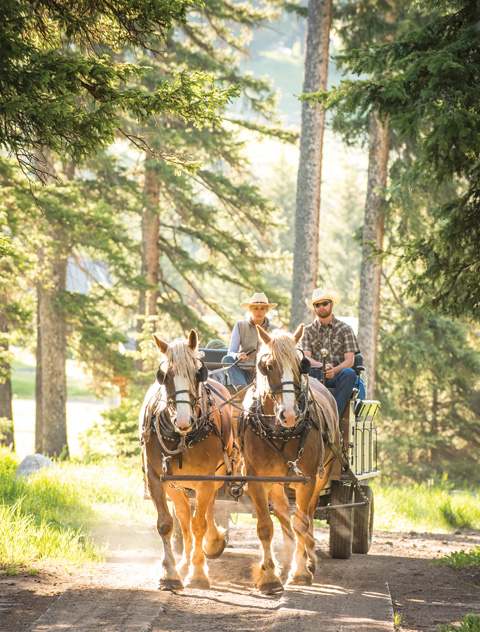
My friend and I came to stay for a week. Past the horse corral, across the meadow at the edge of the woods, our two log cabins are tucked into a 90-degree bend in North Fork Creek. We’ve officially arrived “home.” Chipmunk, as my cabin is called, was not one of the first structures built on this 100+-year-old ranch but, at 1927, it’s less than a decade shy of antique. How many before me have fallen asleep inside these chinked log walls listening to the rushing creek?
In 1915 Clarence Lytle homesteaded this National Historic Register property as a working cattle, horse, and hay-cutting ranch. In the late 20s a Chicago paper mill tycoon bought the place for $50 an acre, built new cabins, and converted it to a guest ranch. Native lodgepole pines harvested from the upper property were wrapped in burlap, dragged down the mountain by teams of draft horses, then triple washed, notched, and stacked on site. Each guest cabin featured linens that matched the wildflowers blooming on their respective sod roofs. After a brief stint as a boys’ camp in the 40s, the ranch became a logging operation in the 50s. In 1955 Lone Mountain Ranch expanded to 11,000 acres and reverted to a working dude ranch for another 20+ years before becoming a cross-country ski and year-round guest ranch. Makar Properties purchased LMR in 2013.
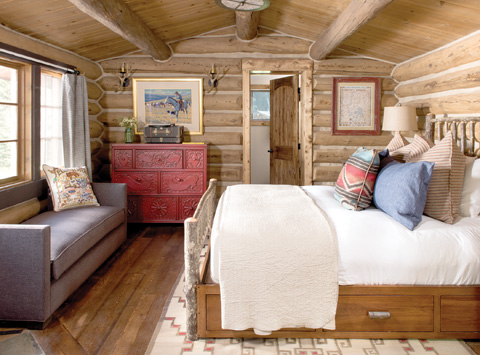
The Chipmunk cabin’s bedroom has a view from the bed.
With so much history etched into every log cabin, fence post, and outbuilding, the new owner sought to preserve the unique history and lifestyle of the ranch by implementing a three-phase plan of structural and aesthetic restoration that will eventually affect 24 cabins of various ages, sizes, and floorplans, two rental log homes, the restaurant, saloon, and outdoor shop. For those who wish to experience the timeless beauty and comfort of log homes paired with the complementary Western lifestyle, come home here. With summer fly fishing trips on the renowned Madison and Gallatin Rivers, pack trips, trail rides, raft trips, summer and winter endeavors in Yellowstone, as well as sleigh rides, ice fishing, and cross-country skiing, guests arrive to do the same things that drew travelers 100 years ago … only they’re a bit more comfortable when doing so today.
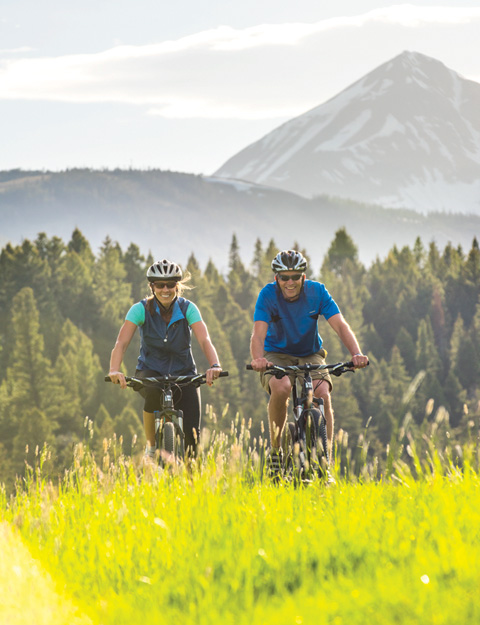
Chipmunk was the original cook’s cabin with the icehouse as the adjoining cabin, now Porcupine. A custom end table/disguised mini-frig serves as my personal icehouse today. The cabins, scattered across the property like wildflowers, offer rustic elegance with luxuriant bedding and linens, contemporary bathrooms, and just the right modern conveniences alongside the heritage logs. There’s only one way to get logs to look like this and that’s to let them sit for nearly a century aging like fine Bordeaux. Just as each log is unique in its size, shape, and character, each cabin differs in furnishings, decor, and charm. It’s a log cabin buffet and I am Goldilocks sampling the wares, only I can’t say no to any of them.
Stone hearths provide warmth and focal design in some cabins while woodstoves accent others. The Ouzel cabin features a four-poster bark-clad log bed and a reclaimed-wood sliding barn door to the bathroom where there’s a claw foot tub. A contemporary concrete sink contrasts with the live-edge wood slab counter. These are the nuances of the renovation: preserving character while adding new charm. Meadowlark, the original gatekeeper’s cabin, offers a glass and tile shower with a slate floor in the bathroom. Burlap-like curtains in the main room hang over the very logs that were wrapped in burlap seven decades earlier. In Bitterroot, a white sheet-rocked wall with built-in cabinets and shelving offsets the log walls and defines a sitting area. Antique and vintage curiosities vary in each cabin: a milking stool, throwing darts, native baskets, woolen rugs, wooden bowls. An array of vintage records provides background music and a spritzer of nostalgia.
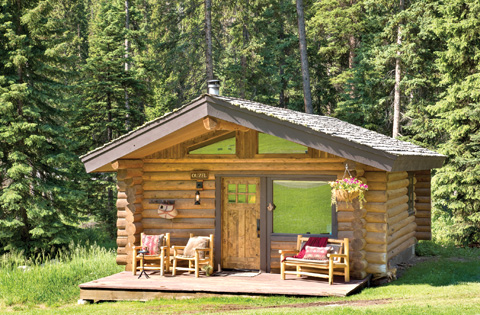
The Ouzel cabin
At full capacity, Lone Mountain Ranch accommodates 100 horses, 90 guests, 100 employees, and at least one requisite ranch dog. After a long day in the saddle, fly fishing, or exploring the Park, guests return to their cabins to find the porch lights on and their beds turned down. Chef Eric Gruber oversees the all-day process of smoking ribs, curing corned beef, and baking fresh pies and breads. The aromas serve as a dinner bell, calling folks to the log Horn & Cantel restaurant where they must decide between dishes like Crispy Skin Local Montana Trout with warm heirloom potato and root vegetable salad or Slow Braised Bison Shortrib “Bourguignon” with potato fondue and gremolata. One needs a week’s stay just to explore the menu. In the adjacent saloon, leathercushioned log post stools line up along the coppertopped bar. The stone fireplace, log beams, and amiable bartender are a tip-of-the-hat to tradition while contemporary touches are evident in the floor-to-ceiling glass gable end wall and high-back leather bar chairs.

A cozy place to dine or play a game in the Ouzel cabin
Each evening a central campfire draws children like fireflies. They practice roping, roast marshmallows, and assemble double-decker smores. The approach is intentional; if the children are involved and having fun so, too, will the parents. Some families have been returning for 30-40 years, each generation banking up memories at the ranch before paying it back with interest to their own children and grandchildren. The logs in these cabins stack up like pages in a history book, each with it’s own story, lore, and footnotes. Back in my cabin in the evening, I select a Johnny Cash LP to play on the phonograph while I take in my surroundings. I’ve spent the week touring historic cabins, listening to guests recount their adventures, and watching staff take genuine pleasure in the joy of their guests. It is the people that have made Lone Mountain Ranch the rare place that it is … those who built and worked it over the years, those who continue to envision and sustain its future, and those who return each year to enjoy it. These logs are home.

